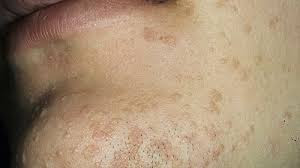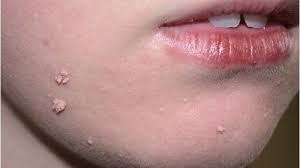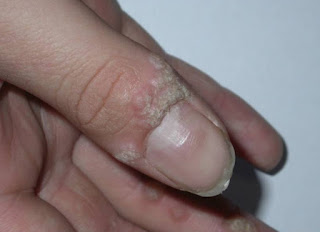- Warts are skin growths that are caused by the human papilloma virus (HPV) and are usually not cancerous
- There are various types of warts and they can grow on all parts of the body.
- You can treat warts at home but clinical treatments are recommended as they are more reliable.
People have been suffering from warts since the beginning of time. The cause of warts have different stories from various parts of the world. In the European folklore, warts are supposed to come from toads; the treatment would be to find a toad to rub on the wart under a full moon... poor toad!
The American story is different but not less funny. Wart remedies that were prescribed during the eighteenth century consisted of rubbing warts with a potato and then bury the potato under a tree. Fortunately, no animal were harmed.
The good news is, medicine has come a long way. Nowadays there are various ways to remove warts, from home remedies to lasers. But the main concern with warts is we want to remove it as fast as possible.
What is a Wart?
A wart is caused by the HPV virus. It is a non-cancerous and benign skin growth that affects the cells on the surface of the skin. The infected skin is usually hard and rough called 'papilloma'. A wart is contagious and spreads with physical contact, even if it's not via direct skin to skin contact. It's best to avoid sharing personal hygienic items such as razors, towels, hair brush when you have a wart or you are living with someone who does.
Unfortunately no one of us is free from being infected by a wart. HPV is very common and studies have shown that over 70% of adults are infected with strains of HPV. Warts are more common in teens and children but people of any age can be affected.
It is a good news that not all strains of HPV will cause warts but most people at some point in their lives will have to take care of a wart infection. Most common places are hands and feet as these are the parts of our body we 'share' mostly with others.
The 'common wart' known scientifically as 'verruca vulgaris' often appears above the surface of skin that has a rough and uneven surface. This is why common warts are often found on the hands rather than any other part of the body. Common warts are also referred to as junior warts or palmer warts.
Flat warts or 'verruca plana' are different from common warts. They often appear in clusters and has a smooth surface. Flat warts are mostly found on the face and neck but it is not uncommon to find them on other parts of the body, mainly on hands, wrists and knees.
Unfortunately no one of us is free from being infected by a wart. HPV is very common and studies have shown that over 70% of adults are infected with strains of HPV. Warts are more common in teens and children but people of any age can be affected.
It is a good news that not all strains of HPV will cause warts but most people at some point in their lives will have to take care of a wart infection. Most common places are hands and feet as these are the parts of our body we 'share' mostly with others.
Various Types of Warts
There are different types of warts and they come in different textures and sizes. There are some that can appear in a cluster and cover a large skin area whereas most will appear in only one spot. Warts can be same color as the skin but more often they'll be of a grayish brown color. There are different types of warts that appear on specific areas of the body. As already mentioned, the most common places to have warts are the hands, others will appear on the soles of the feet while another type will appear on the face only.Common Warts
 |
| Common warts on a hand |
The 'common wart' known scientifically as 'verruca vulgaris' often appears above the surface of skin that has a rough and uneven surface. This is why common warts are often found on the hands rather than any other part of the body. Common warts are also referred to as junior warts or palmer warts.
Flat Warts
 |
| flat warts on the face |
Flat warts or 'verruca plana' are different from common warts. They often appear in clusters and has a smooth surface. Flat warts are mostly found on the face and neck but it is not uncommon to find them on other parts of the body, mainly on hands, wrists and knees.
Plantar Warts
 |
| Plantar wart on feet sole |
Plantar warts or 'verruca plantaris' are not less common type of wart. These occur on the soles of the feet and can be very painful if not treated promptly. If left untreated these lumps hardens and makes it painful to walk and it hurts when pressure is applied to the wart.
This is probably the most hated type of wart. The filiform warts are characterized by thread like growths that radiates outwards from the center. They sometimes grow like bumps. Filiform warts mostly grow on the face, around the nose, lips or the chin. Some people can even have it around the eyes.
Periungual warts grows on the fingers, they mainly form in clusters around the fingernails and toenails. People who are more prone to have periungual warts are those who bite their nails.
These clinical solutions tend to remove warts without any visible scar. The treatment recommended by the doctor will be according to the wart you are suffering from and also the location. It is good to know that any of these treatment will not prevent warts from coming back as we're all exposed to HPV whether we like it or not.
Cantharidin - Because it is considered an extremely hazardous substance, catharidin is only applied in a doctor's office. The solution will cause the skin to blister and thus destroy the wart.
Imiquimod - The preparation is obtained by prescription only and can be applied at home. The drug will boost the himune system and in the process, it'll fight the HPV. It is used mainly to treat genital warts. The treatment can be long at times and last up to four to five months. But this is a very effective treatment.
Laser surgery - Nowadays laser surgery is used to treat almost everything, even warts. This treatment uses intense light to burn away warts.
The procedure is performed under local anesthetic in a doctor's office. The good news is laser surgery will not leave any visible scar but this treatment can be costly.
Cryotherapy - This one might sound scary but it's the most common clinical procedure for wart removal. Cold liquid nitrogen is used to freeze the wart tissue making it easier for removing the infected tissue. It is a painful procedure but the pain usually fades within three to four days and the healing process takes up to two weeks.
Salicylic Acid - Your best bet to get rid of your wart at home is salicylic acid. Many over the counter wart removal products contain salicylic acid. One of the most effective ointment being wartrol, containing 17% of the active ingredient. Salicylic acid works on all types of wart but it's good to avoid using it if your skin is too sensitive.
Before applying salicylic acid to your wart, it is important to exfoliate the skin so that the ingredient can work effectively and act fast. When the drops are applied to the wart, cover it up with a band-aid. Repeat this process daily till the warts goes away.
Duct Tape - This may sound ridiculous but it actually works. This technique is know as 'tape occlusion'. It's pretty simple. You just need a piece of duct tape, bigger than the size of your wart so it can be covered. Leave the tape on for six days. If the tape falls off when you shower, try to replace it immediately.
After six days, remove the tape, wash the wart with warm water and exfoliate the skin. Cover the wart again with duct tape and leave for another 6 days. Repeat this process till the wart is gone.
Tea Tree Oil - Also known as 'melaleuca', tea tree oil is used to treat a variety of skin problems including warts. It is among the most effective home remedies. The oil is derived from the sap of an Australian tree thus making is a natural wart treatment.
Unfortunately many people with sensitive skin can't use tea tree oil to treat warts as the oil either will irritate their skin or cause some allergic reaction. Test the oil on the upper side of your hand first, not directly to your wart. Leave it for a few hours and see if there's any reaction. If everything's okay, you can apply the oil with a cotton swab to cover the wart and wrap with a bandage. Repeat this every night till the wart is gone.
Apple Cider Vinegar - Just as tea tree oil, apple cider vinegar is also an old home remedy for various health problems. It has been used for wart removal for centuries. This method is also very simple. Soak a cotton ball in apple cider vinegar. Apply to your wart and cover with a bandage and leave for an hour then rinse with warm water. Repeat this daily till the wart disappears. When you start this method, your skin might burn a little bit. Don't let this discourage you to continue using apple cider vinegar.
Since warts are contagious, no one is safe from it but when the immune system is low, warts will last longer and be more difficult to get rid of. Make sure to boost your immune system as soon as you notice a new wart to avoid it from spreading.
You will need a few changes so that you can balance your immune system and this includes getting enough sleep and eating well. Any other immune-boosters like vitamin C, leafy greens and antioxidants will help to get rid of warts faster.
Updated on 11 June 2020
Filiform Warts
 |
| Filiform wart on face |
Periungual Warts
 |
| Periungual warts around fingernail |
Getting Your Warts Removed Professionally
Warts are harmless. The main problem with warts is they are very unattractive. Warts usually go away on their own, some can take a few days while others can take months. This is assuming you have a normal immune system. But some warts tend to come and go occasionally, which can be a pain to deal with. Most people tend to want to get rid of a wart as soon as it appears. Getting warts removed clinically is the fastest avenue to recovery but tend to cost more too.These clinical solutions tend to remove warts without any visible scar. The treatment recommended by the doctor will be according to the wart you are suffering from and also the location. It is good to know that any of these treatment will not prevent warts from coming back as we're all exposed to HPV whether we like it or not.
Cantharidin - Because it is considered an extremely hazardous substance, catharidin is only applied in a doctor's office. The solution will cause the skin to blister and thus destroy the wart.
Imiquimod - The preparation is obtained by prescription only and can be applied at home. The drug will boost the himune system and in the process, it'll fight the HPV. It is used mainly to treat genital warts. The treatment can be long at times and last up to four to five months. But this is a very effective treatment.
Laser surgery - Nowadays laser surgery is used to treat almost everything, even warts. This treatment uses intense light to burn away warts.
 |
| Plantar wart - laser removal |
Cryotherapy - This one might sound scary but it's the most common clinical procedure for wart removal. Cold liquid nitrogen is used to freeze the wart tissue making it easier for removing the infected tissue. It is a painful procedure but the pain usually fades within three to four days and the healing process takes up to two weeks.
Getting Your Warts Removed at Home
Just as warts can be removed clinically, they can as well be removed at home. Some people have had warts almost of their life. The cost of getting the warts removed by the doctor will grow unnecessarily over time. There are a few proven methods to remove warts at home and the cost is just a fraction of what it can cost being removed by a doctor.Salicylic Acid - Your best bet to get rid of your wart at home is salicylic acid. Many over the counter wart removal products contain salicylic acid. One of the most effective ointment being wartrol, containing 17% of the active ingredient. Salicylic acid works on all types of wart but it's good to avoid using it if your skin is too sensitive.
Before applying salicylic acid to your wart, it is important to exfoliate the skin so that the ingredient can work effectively and act fast. When the drops are applied to the wart, cover it up with a band-aid. Repeat this process daily till the warts goes away.
Duct Tape - This may sound ridiculous but it actually works. This technique is know as 'tape occlusion'. It's pretty simple. You just need a piece of duct tape, bigger than the size of your wart so it can be covered. Leave the tape on for six days. If the tape falls off when you shower, try to replace it immediately.
After six days, remove the tape, wash the wart with warm water and exfoliate the skin. Cover the wart again with duct tape and leave for another 6 days. Repeat this process till the wart is gone.
Tea Tree Oil - Also known as 'melaleuca', tea tree oil is used to treat a variety of skin problems including warts. It is among the most effective home remedies. The oil is derived from the sap of an Australian tree thus making is a natural wart treatment.
Unfortunately many people with sensitive skin can't use tea tree oil to treat warts as the oil either will irritate their skin or cause some allergic reaction. Test the oil on the upper side of your hand first, not directly to your wart. Leave it for a few hours and see if there's any reaction. If everything's okay, you can apply the oil with a cotton swab to cover the wart and wrap with a bandage. Repeat this every night till the wart is gone.
Apple Cider Vinegar - Just as tea tree oil, apple cider vinegar is also an old home remedy for various health problems. It has been used for wart removal for centuries. This method is also very simple. Soak a cotton ball in apple cider vinegar. Apply to your wart and cover with a bandage and leave for an hour then rinse with warm water. Repeat this daily till the wart disappears. When you start this method, your skin might burn a little bit. Don't let this discourage you to continue using apple cider vinegar.
Warts and Your Immune System
People are more prone to have warts when they have a weak immune system. Many have reported that warts appear mainly when they are not getting enough sleep, stressed or when they are exhausted.Since warts are contagious, no one is safe from it but when the immune system is low, warts will last longer and be more difficult to get rid of. Make sure to boost your immune system as soon as you notice a new wart to avoid it from spreading.
You will need a few changes so that you can balance your immune system and this includes getting enough sleep and eating well. Any other immune-boosters like vitamin C, leafy greens and antioxidants will help to get rid of warts faster.
Updated on 11 June 2020










